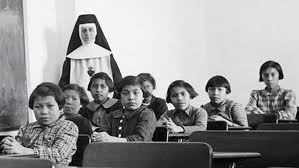Personal and Cultural Identity
ASSIGNMENT 3: Making Inferences
|
Learning Target (Curricular Competencies):
|
Task:
Writers use inference in their text to make their writing more interesting. It's not necessary to tell the reader every detail. Good readers make inferences, or conclusions, as they read. It's an important skill for understanding text, as authors often imply themes and ideas, without stating them outright. Instead, writers let readers draw their own conclusions about what is happening.
For example, look at the picture below remembering that a picture captures a moment in time. Who are these people? What is happening in this scene? Before this scene? After this moment? What can you infer?
Write a narrative paragraph telling the story of what is happening in the picture. You need to infer what is happening in the picture and form your own conclusion. Make sure you read the next page that summarizes narrative writing. Your paragraph should follow a standard plot outline that includes an introduction, rising action, climax, falling action and conclusions (denouement).

Assessment: Below you will find the exemplary criteria used to assess the assignment.
Learning Target: (Exemplary 6/6): Exemplary comprehension of the task and clear accomplishment of the objective. Final product demonstrates a thorough understanding of narrative writing which includes the standard plot structure. Demonstrates the ability to infer from a societal perspective as well as a personal perspective and communicates that understanding with clarity, respect, depth, and insight. Student demonstrates critical, creative, and reflective thinking to explore how inference creates personal and cultural perspectives and points of view.
Written Expression: Exemplary (6/6): Sentence structure and vocabulary are varied, skillfully written, and carefully chosen. Work has been proofread and there are few or no errors in spelling, capitalization, punctuation, and grammar. Content contributes to the central idea and makes insightful connections with logical organization.
Submission:
Use the "3.3 Making Inferences" link on the main page of this section of the course to upload your assignment to your teacher for marking.
